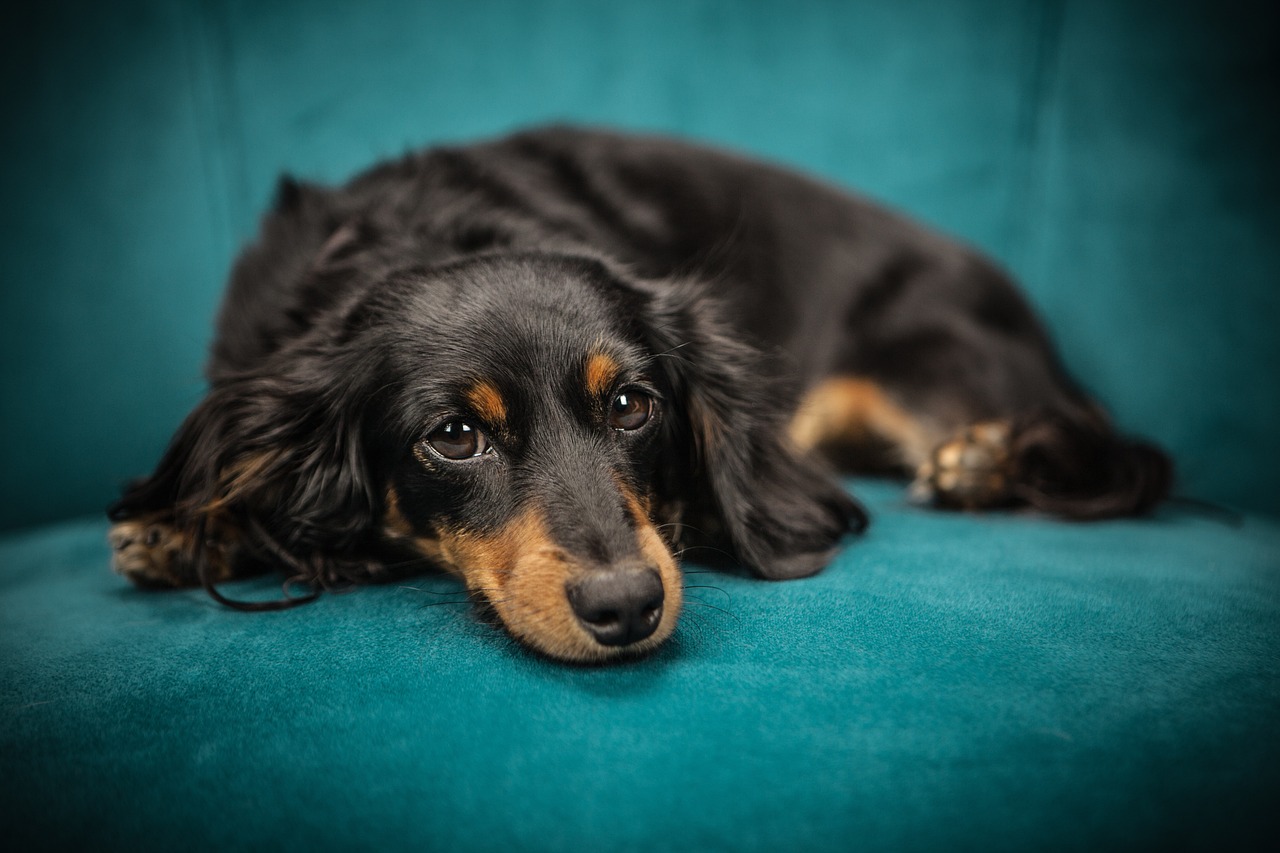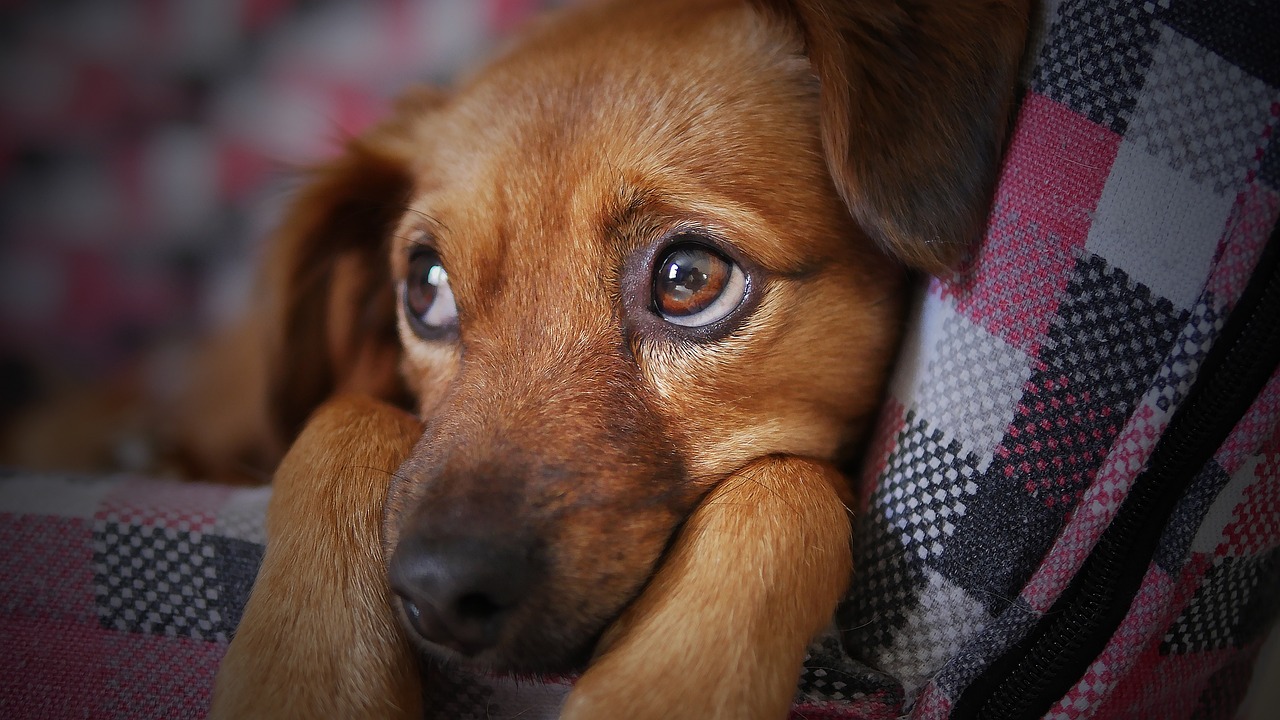shutter stock
Many dog owners are familiar with the so-called “guilty look” that dogs show after doing something wrong. This classic facial expression – head bowed, eyes drooped, tail tucked – suggests that the dog knows they’ve done something wrong. However, what looks like guilt to humans can be caused by a variety of emotions that are far more complex and diverse than we realize. Dogs experience a wide range of emotions just like humans, so a guilty look may not always be what it seems.
obedience and appeasement
 shutter stock
shutter stock
One of the main emotions behind a dog’s guilty look is submission. Dogs are hierarchical pack animals, and showing obedience is a way to maintain harmony within the group. When your dog gives you a guilty look, it may be displaying appeasement behavior to defuse a situation it perceives to be tense. Lowering their heads, tucking their tails in, and looking away indicate they are not a threat and are trying to avoid conflict. In moments like this, they may be reacting to your body language and tone rather than feeling guilty.
fear of punishment
 shutter stock
shutter stock
Another emotion that manifests as guilt is fear of punishment. If your dog has been scolded for misbehaving in the past, he may associate certain behaviors or objects (such as a chewed-up shoe) with negative consequences. When they express guilt, they may expect rebuke or punishment rather than feeling remorse. In these cases, the expression on the person’s face indicates fear or anxiety rather than guilt. Understanding this dynamic is very important for training because punishing your dog after the fact can create confusion rather than correct behavior.
Anxiety about human reactions
 shutter stock
shutter stock
Dogs are incredibly attuned to their owners’ emotions, often mirroring the energy and stress they receive from humans. If you come home upset and notice a mess, your dog may sense your anger or frustration and respond with an anxious look. The guilty look in this scenario is more due to their reaction to your emotional state than any recognition of their wrongdoing. Dogs thrive on harmonious relationships with humans, and when they sense tension, they may engage in anxious behavior such as displaying guilt as a way to defuse the situation.
confusion and uncertainty
 shutter stock
shutter stock
Sometimes the dog appears to be feeling guilty because he is confused or unsure of what is going on. If your dog doesn’t have a clear understanding of why he’s being scolded or what he did wrong, he may assume a submissive position as a way to appease his owner. Dogs thrive on routine, clear communication. When these elements are disrupted, they can react in confusion. This guilty look often reflects their uncertainty about the situation, and they are trying to navigate interactions with their owners by defaulting to submissive behavior.
desire for security
 shutter stock
shutter stock
Dogs seek connection and security with humans. A look of guilt can sometimes appear in search of comfort. After doing something that they think is wrong, dogs may seek reassurance from their owners, hoping to repair the relationship and restore balance. Expressions of guilt may reflect a desire to receive positive feedback and affection from the owner, rather than an understanding of the owner’s actions. This behavior speaks to the strong emotional bond between dogs and humans, as dogs are highly motivated to maintain social harmony within their pack.
recognition of discomfort
 shutter stock
shutter stock
Dogs may not fully understand the concept of guilt like humans do, but they can definitely sense their owners’ discomfort. When a dog senses that its owner is dissatisfied or angry, it may display a guilty look to acknowledge the tension. This response is rooted in the dog’s emotional sensitivity to human cues, rather than an understanding of guilt. Although dogs may not be able to associate their specific behaviors with their owners’ reactions, they are adept at reading emotional signals. They often act submissively to defuse perceived conflicts.
Empathy and emotional bonding
 shutter stock
shutter stock
Dogs are highly empathetic creatures and can sense when their owners are upset or in pain. Guilty facial expressions may reflect their empathic nature, as they respond to their owners’ negative emotions by displaying submissive or appeasing behavior. This reaction strengthens the emotional bond between dog and owner as the dog tries to comfort and soothe the human. The empathic bond between a dog and its owner is a powerful force, and in emotionally charged situations, dogs may show support through a guilty look.
asking for forgiveness
 shutter stock
shutter stock
Another reason for feeling guilty is that the dog is asking for forgiveness. They may not fully understand why their actions were wrong, but they will understand when their owners are dissatisfied. In response, the dog may display placating gestures, such as a guilty look, in order to repair the relationship and receive positive feedback. This request for forgiveness is not about guilt, but rather a strong desire to please and make amends. Dogs are social animals and rely on the approval of their pack, which motivates them to repair the rifts caused by their actions.
instinctive obedience to authority
 shutter stock
shutter stock
A guilty look may also be tied to a dog’s instinctive obedience to authority figures. In the wild, pack dynamics require members to respect the alpha, and this instinct remains in domestic dogs. When dogs sense that their “alpha” owners are upset, they may respond with submissive gestures to show respect and acknowledge authority. In this case, the guilty look is the dog’s way of showing that it accepts its lower position in the hierarchy and does not want to challenge its owner’s superiority.
Memories of past reprimands
 shutter stock
shutter stock
Dogs have excellent memories, and if they have been reprimanded for a certain behavior in the past, they are likely to remember the consequences even if the situation changes. When faced with similar situations, such as finding a chewed object, guilt may be expressed as a conditioned reflex based on past experience. This behavior is not necessarily tied to guilt, but rather to the memory of being scolded. A guilty look becomes a learned response, predicting your reaction based on what has happened before.
Misinterpretation of human signals
 shutter stock
shutter stock
Sometimes what we perceive as a guilty look is simply the dog trying to interpret and respond to the human’s body language or tone of voice. Dogs are very sensitive to their owners’ physical cues, and when they sense anger or disappointment, they may respond with submissive behavior, even if they don’t fully understand why. In these cases, the dog is responding to the emotional situation at the time, rather than the specific behavior being criticized. This misinterpretation of human cues can result in the classic guilty look, even if the dog has done nothing wrong.
stress response to conflict
 shutter stock
shutter stock
For some dogs, a guilty look can be a stress response to conflict or tension in the household. When dogs are exposed to arguments, shouting, or other stressful situations, they may adopt a submissive posture to cope with the stress. A guilty look is not necessarily tied to a specific behavior, but rather reflects the dog’s discomfort with its environment. In situations like this, it’s important to consider the broader context of your dog’s behavior, as it may be a response to an external stressor rather than guilt over a specific behavior.
Habitual behavior through positive reinforcement
 shutter stock
shutter stock
Finally, if your dog receives positive reinforcement after showing guilt, guilt can become a habit. If a dog makes a guilty look and is then comforted or reassured by its owner, it may learn to use this expression to elicit affection or attention. Over time, this behavior can become your dog’s default response when he feels nervous or uncomfortable. In this case, the guilty look has evolved into a learned behavior, which the dog uses as a strategy to seek comfort and approval from its owner.
The complexity behind the sinful look

Typical canine guilt is not as simple as you might think. It is not a sign of guilt, but can be caused by a variety of emotions, from fear and anxiety to empathy and submission. By understanding the emotions behind your dog’s guilty expression, you can better interpret their behavior and respond in ways that strengthen your bond. Your dog may appear to feel guilty for doing the wrong thing, but a dog’s emotional response is actually more complex and depends on the depth of your dog’s sensitivity and your relationship with him. The connection becomes clear.




